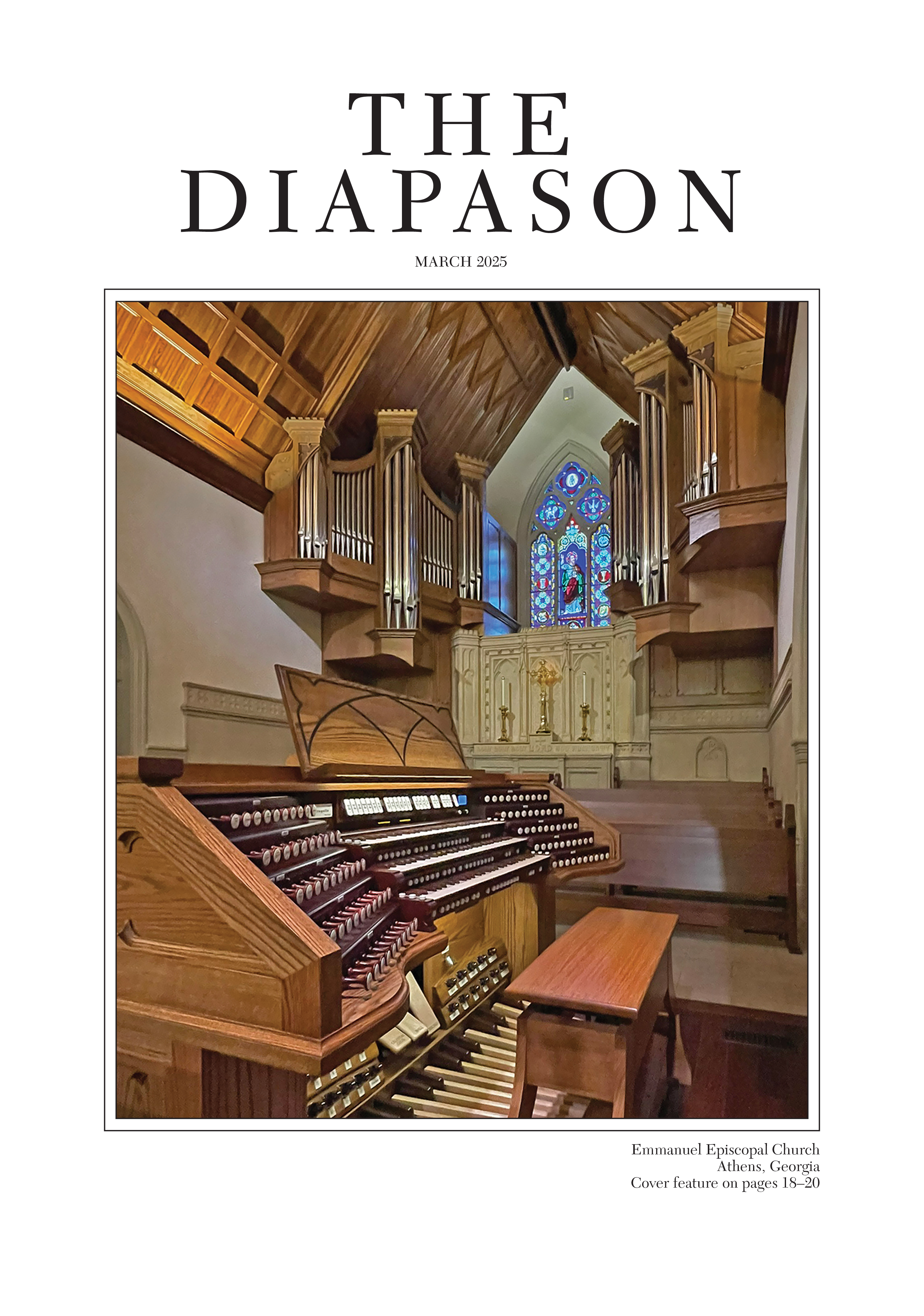Hinners Opus 2696
Buzard Pipe Organ Builders, Champaign, Illinois
Living Word Church, Roberts, Illinois

Relocation and resurrection
I received a telephone call in May of 2010. A lady familiar with Buzard Pipe Organ Builders’ restoration work had purchased a Hinners organ at auction, which she hoped could be installed in Living Word Church in Roberts, Illinois. Would we be interested and available to remove the organ from the former Sibley (Illinois) United Methodist Church and reinstall it in Roberts? Of course! As is usually the case, we were immediately asked to state exactly how much the project would cost, despite the fact that it had been seven years since we had last seen the organ. Power had already been cut to the building, so we had absolutely no way to accurately assess the current condition of the instrument. Even though we were in the midst of an installation elsewhere, it was necessary to remove the Hinners organ immediately, since the windows were about to be taken out of the building and the building demolished.
This two-manual and pedal, 71⁄2-rank electropneumatic action organ was built by the Hinners Organ Company of Pekin, Illinois, for an unknown location. It appears to have been constructed originally with tubular-pneumatic action. We believe that the original date of the instrument was before 1919, since the pitch of the organ is A-435. It was rebuilt by Hinners circa 1924 with electropneumatic action and installed by them in the United Methodist Church of Sibley. The manual windchests were originally designed to accommodate one more stop in each division, but the prepared-for mechanisms and pipes for these possible stops were never completed. At some time in the 1960s or thereafter, the console mechanisms were replaced with supply-house equipment by a Peoria technician.
Buzard Pipe Organ Builders first encountered this organ in 2003, when we undertook restoration work on the pneumatic actions for the speaking façade pipes. The organ continued in service until the Sibley church closed in 2009.
The hasty removal from Sibley was, of course, followed by the classic “hurry up and wait.” It would, in fact, be two years before Living Word Church completed their preparations to receive the instrument (providing an elegant space when all was said and done, however). From the outset, it was made clear that the project must proceed with limited funds. We did convince the church that restoration of the main reservoir was an important step, since it would not be easily removable once the rest of the organ was erected. No money was available to restore the windchests, even though we had no idea whether they still worked. Of course, money did become available to repair and repaint the façade pipes and replace the fabric in the screening that forms part of the case front.
At long last, as site preparations were being completed by church volunteers, we began work at the Buzard factory. Cotton-covered wiring had to be replaced to bring the organ into compliance with the revised electrical code. Pipes absolutely needed to be cleaned, and stoppers releathered (or nothing could have been tuned). Early in March 2012, we had the organ winded in the factory, loaded the pipes, and thanks be to God everything still worked!
Everything was taken down, brought to Roberts, and the resurrected organ was first heard again on Easter Day, April 8, 2012.
In this day and age when so many organs go unheard or sit in storage, we are deeply appreciative of the foresight of one woman who “just wanted the young people to hear what a real hymn sounds like.” The future of this particular little organ is secure, and we look forward to its continuing in its intended purpose—to create another generation of churchgoers who know and love the pipe organ!
—Keith Williams
Director of Service & Associate in Sales


